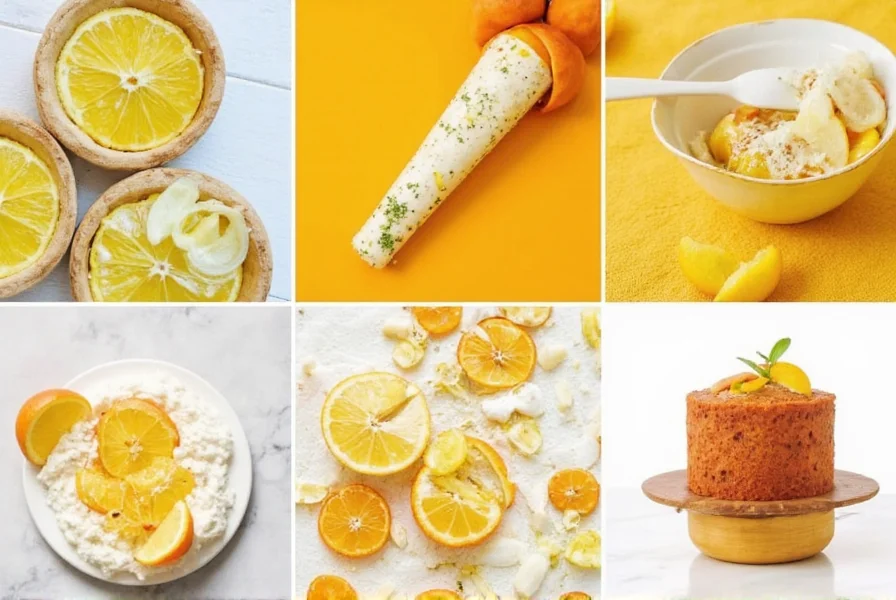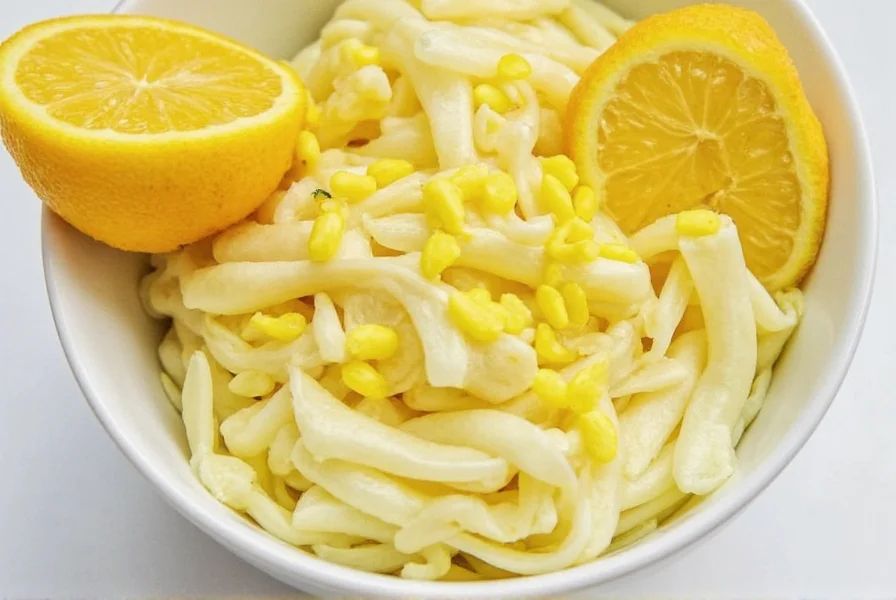Zesting citrus is the process of removing the colored outer layer of citrus peels to capture their aromatic oils for flavoring dishes. This guide shows you exactly how to zest citrus properly for maximum flavor without bitterness. Whether you're a home cook or professional chef, mastering this technique will transform your recipes with vibrant, fresh citrus notes.
In this article, you'll learn step-by-step zesting methods, the best tools for different citrus types, storage solutions to preserve freshness, creative uses beyond baking, and answers to common questions. Let's unlock the full potential of citrus zest together.
| Fruit | Flavor Profile | Best For | Recommended Pairings |
|---|---|---|---|
| Lemon | Sharp, bright, tangy | Sweet desserts, fish dishes, dressings | Basil, thyme, blueberries, honey |
| Lime | Grassy, bold, slightly floral | Mexican cuisine, ceviche, tropical cocktails | Cilantro, chili, coconut, mango |
| Orange | Sweet, warm, aromatic | Baked goods, stews, glazes | Vanilla, cardamom, dark chocolate, almonds |
| Grapefruit | Bitter, floral, refreshing | Salads, sorbets, light pastries | Honey, mint, ginger, fennel |
| Bergamot | Elegant, spicy, floral | Teas (like Earl Grey), gourmet desserts | Earl Grey tea, black pepper, lavender |
| Tool | Pros | Cons | Best For |
|---|---|---|---|
| Microplane | Super fine zest, easy to clean | Blades can dull quickly | Soft citrus like lemons and limes |
| Box Grater | Inexpensive, multi-purpose | Rougher cuts, harder to clean | Larger citrus like oranges |
| Rotary Zester | Fast and efficient, creates strips | More expensive, less common | Garnishes, candied zest |
| Channel Knife | Makes beautiful ribbons | Not great for volume | Presentation-focused dishes |


What Is Citrus Zest?
Citrus zest is the thin, colored part of the citrus peel — technically called the zest or outer rind — that contains the aromatic oils responsible for the fruit's distinct scent and flavor. Beneath the zest lies the white, spongy pith, which is bitter and not used in cooking.
What Makes It Special?
Unlike juice, which brings acidity, zest adds fragrance, depth, and brightness without altering texture or moisture content. This makes it ideal for sprinkling into dry batters, marinades, or even dusting over finished dishes like a flavorful snowfall.
Why Citrus Zest Matters in Cooking
Zest isn't just about adding a punch of flavor; it plays several roles in culinary applications:
- Flavor Enhancer: Intensifies other flavors in a dish, especially chocolate, vanilla, seafood, and herbs.
- Natural Preservative: Contains natural oils with mild antimicrobial properties.
- Aesthetic Appeal: Adds vibrant color to dishes and desserts.
- Versatility: Can be used in both sweet and savory recipes.
How to Zest Citrus Like a Pro
Follow these steps for perfect zest every time:
- Choose Organic Citrus: Pesticide-free skins are safer for zest harvesting.
- Wash Thoroughly: Scrub under warm water to remove wax or dirt.
- Dry Completely: Wet peels slip and result in uneven grating.
- Use the Right Tool: Microplane, box grater, or rotary zester — more on this later!
- Zest Just Before Use: Flavor diminishes once exposed to air.
Pro Tip: Avoid the Pith!
If your zest looks fluffy and white, you've gone too deep. Stick to the colored layer only. The microplane helps control the pressure and keeps your zest fine and fragrant.
Zest Substitutes: When Life Gives You No Lemons
Running low on zest? Try these alternatives — though they won't replicate the exact flavor, they can help you out in a pinch:
- Lemon Extract: Add a few drops to replace lemon zest.
- Dried Citrus Peel: Less aromatic but usable in long-cooking dishes.
- Lemon Juice: Provides acidity but lacks zest's aroma and intensity.
- Lemon Oil: Use sparingly — a drop equals about one teaspoon of zest.
Creative Uses for Citrus Zest Beyond Baking
Zest isn't just for cakes and cookies! Here are some innovative ways to incorporate it into your daily meals:
- Spice Rubs: Mix zest with paprika, garlic powder, and salt for grilled chicken or shrimp.
- Homemade Salt Blends: Combine lemon zest with sea salt for an elevated finishing touch.
- Infused Oils: Steep zest in olive oil for salad dressings or drizzling over pasta.
- Hot Drinks: Sprinkle orange zest into hot cocoa or chai tea for a warming twist.
- Glazed Vegetables: Toss roasted carrots or green beans with orange zest and honey.
Storage Tips: How to Keep Zest Fresh Longer
Citrus zest loses potency quickly if not stored properly. Here are some tried-and-true methods:
- Fresh Use: Use immediately after grating for peak flavor.
- Freezing: Spread zest on parchment paper and freeze in a zip-top bag. Grate straight from the freezer as needed.
- Oil Preservation: Store zest in olive oil in a sealed jar in the fridge for up to two weeks.
- Salt Curing: Layer zest with coarse sea salt in a jar. Rinse before using.
Frequently Asked Questions About Citrus Zest
- What's the difference between citrus zest and peel?
- Citrus zest refers only to the thin, colored outer layer of the peel that contains aromatic oils. The peel includes both the zest and the white pith beneath it, which is bitter. When a recipe calls for zest, you should only use the colorful part, avoiding the bitter white pith.
- How much zest does one citrus fruit typically yield?
- On average: one lemon yields about 1-2 tablespoons of zest, one lime yields 1-1.5 tablespoons, one orange yields 2-3 tablespoons, and one grapefruit yields 3-4 tablespoons. The exact amount depends on the fruit's size and your zesting technique.
- Why is my citrus zest bitter?
- Bitterness occurs when you've grated too deeply into the white pith beneath the colored zest layer. Always use a light touch with your zesting tool and stop as soon as you see white in your zest. The microplane grater is excellent for preventing this issue as it naturally limits how deep you can grate.
- Can I use non-organic citrus for zest?
- While you can, it's not recommended. Conventionally grown citrus is often treated with waxes and pesticides that remain on the peel. If you must use non-organic fruit, wash it thoroughly with a vegetable brush and warm water, but organic is always preferable for zest.
- How should I measure citrus zest?
- Citrus zest is typically measured in teaspoons or tablespoons. Lightly pack the zest into your measuring spoon without pressing down too hard. For precision recipes, especially baking, it's best to zest the fruit first before measuring to ensure accuracy.
- Can I substitute dried citrus zest for fresh?
- Dried zest works in some long-cooking dishes but lacks the vibrant aroma of fresh zest. As a general rule, use 1 teaspoon of dried zest for every 1 tablespoon of fresh zest. However, fresh is always superior for the best flavor and aroma.
- Is citrus zest healthy?
- Yes! Citrus zest contains many of the fruit's beneficial compounds, including vitamin C, antioxidants, and flavonoids. It's low in calories while adding significant flavor, making it a healthy way to enhance dishes without added sugars or fats.
Conclusion
Citrus zest is one of those unsung heroes in the spice and flavor arsenal. Its ability to transform a dish with minimal effort is nothing short of magical. Whether you're looking to enhance a dessert, jazz up a marinade, or simply add a splash of color and freshness to your plate, zest deserves a permanent spot in your kitchen toolkit.
Remember, quality matters — choose ripe organic fruits, invest in a good zesting tool, and store your zest wisely to enjoy its full potential. With these tips and techniques, you're ready to zest your way to culinary brilliance!











 浙公网安备
33010002000092号
浙公网安备
33010002000092号 浙B2-20120091-4
浙B2-20120091-4